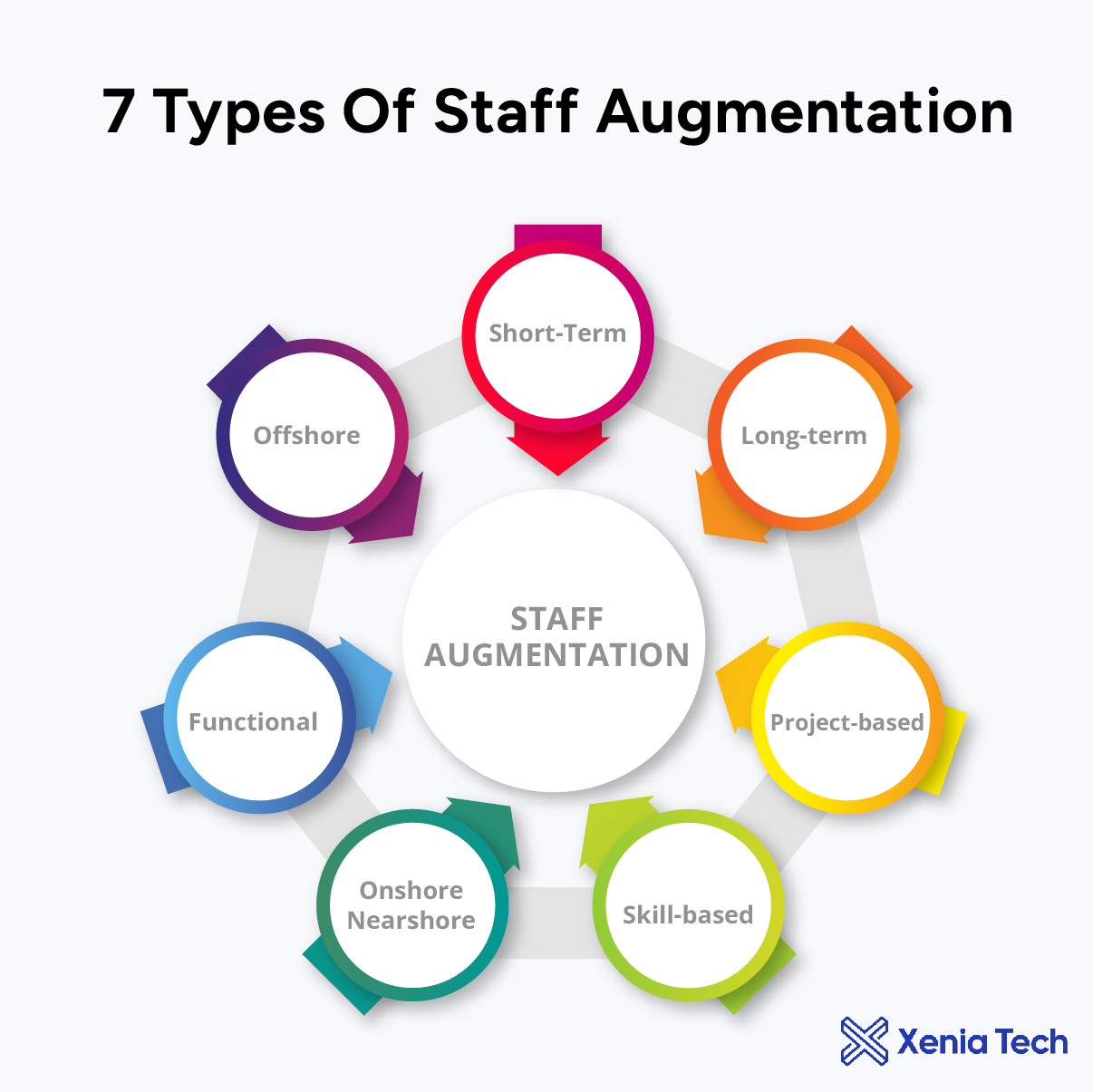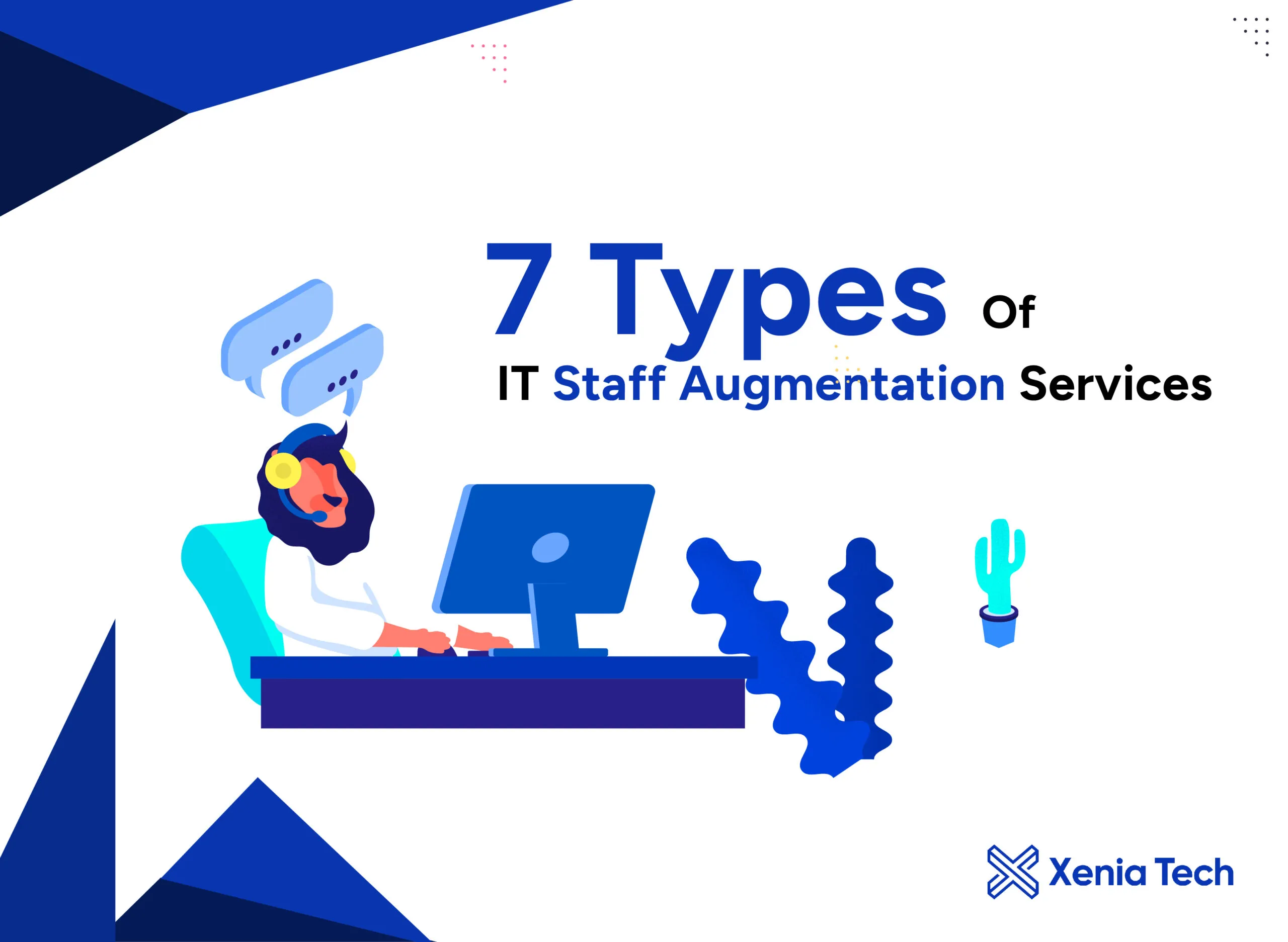Staff augmentation services is an effective outsourcing model used in many businesses, especially in IT companies, to fill skill gaps that a company or a business requires on a short-term, long-term, or project-based basis. It sounds quite similar to outsourcing; however, staff augmentation and outsourcing differ greatly.
What is IT Staff Augmentation?
There are also many types of staff augmentation, having a full understanding of types of staff augmentation can help make effective business strategies, and keep your IT projects on track with rapid growth. In this article, we have provided a full guide to various types of staff augmentation services with examples and benefits of each. We hope that you can choose the right fit for your projects.
Short-term IT Staff Augmentation
Short-term staff augmentation is ideal for temporary needs. This model helps when there are sudden increases in workload or short-term projects. It also covers employee absences. Typically, these engagements last from a few weeks to a few months. It provides immediate access to specialized IT skills, is flexible and cost-effective for urgent needs, and is easy to scale up or down based on project demands.
Example: Hiring additional IT support technicians during a major software deployment.
Long-term IT Staff Augmentation
Long-term staff augmentation is perfect for filling roles for extended periods. It supports ongoing IT projects and operational needs. These engagements can last from several months to several years. This model ensures stability and continuity for long-term projects, allows integration into the company’s IT processes and culture, and is more cost-effective than hiring full-time employees for non-permanent roles.
Example: Engaging a database administrator for an extended period to manage and optimize database systems.
Project-based IT Staff Augmentation
Project-based staff augmentation involves assembling a specialized team that has specialized IT experts for a specific project. This type of staff augmentation ensures all necessary technical skills are available. The duration is linked to the project’s timeline, which can vary widely. It ensures the project has the right mix of technical skills, can be planned and budgeted precisely according to project timelines, and provides flexibility to ramp up or down as the project progresses.
Example: Hiring a team of software developers and QA engineers for a 12-month custom software development project.
Skill-based IT Staff Augmentation
Skill-based staff augmentation brings in specific technical expertise. This model is useful when the existing IT team lacks certain skills. These engagements can be short-term or long-term, depending on the needs. It provides access to niche technical skills and specialized knowledge, offers immediate availability of expertise without extensive training, and enhances the capabilities of the existing IT team.
Example: Engaging a cybersecurity expert to conduct a security audit and implement new security protocols.
Offshore IT Staff Augmentation
Offshore staff augmentation reduces costs by leveraging IT talent in countries with lower labor costs. This model can be used for short-term or long-term needs. It offers significant cost savings on IT labor, provides access to a global talent pool, and often delivers 24/7 operational capabilities due to time zone differences. However, it requires robust project management to handle remote teams effectively and may involve communication barriers and cultural differences.
Example: Hiring software developers from Eastern Europe to work on a development project.
Onshore/Nearshore IT Staff Augmentation
Onshore or nearshore staff augmentation ensures better alignment in terms of time zones, language, and cultural similarities. This model offers flexibility depending on project needs. It improves communication and collaboration, eases integration with the existing IT team and company culture, and reduces travel costs and logistical challenges compared to offshore models.
Example: Engaging a network engineer from a neighboring country to support a regional infrastructure upgrade.
Functional IT Staff Augmentation
Functional staff augmentation fills specific roles within the IT department. This includes software development, network administration, or IT support. The duration can vary based on the function’s needs. It brings in experts to perform specialized IT roles without long-term commitments, quickly addresses gaps in the organization’s IT capabilities, and provides flexibility to adapt to changing business and technical needs.
Example: Hiring an IT project manager to lead a complex software implementation project.
Conclusion

Deciding on the right resource augmentation approach is key to optimizing your in-house team. Each type of staff augmentation has its distinct advantages, catering to different project scopes and durations. By understanding these varieties, you can enhance your team’s capabilities, ensure projects run smoothly, and adapt swiftly to changing business demands.




